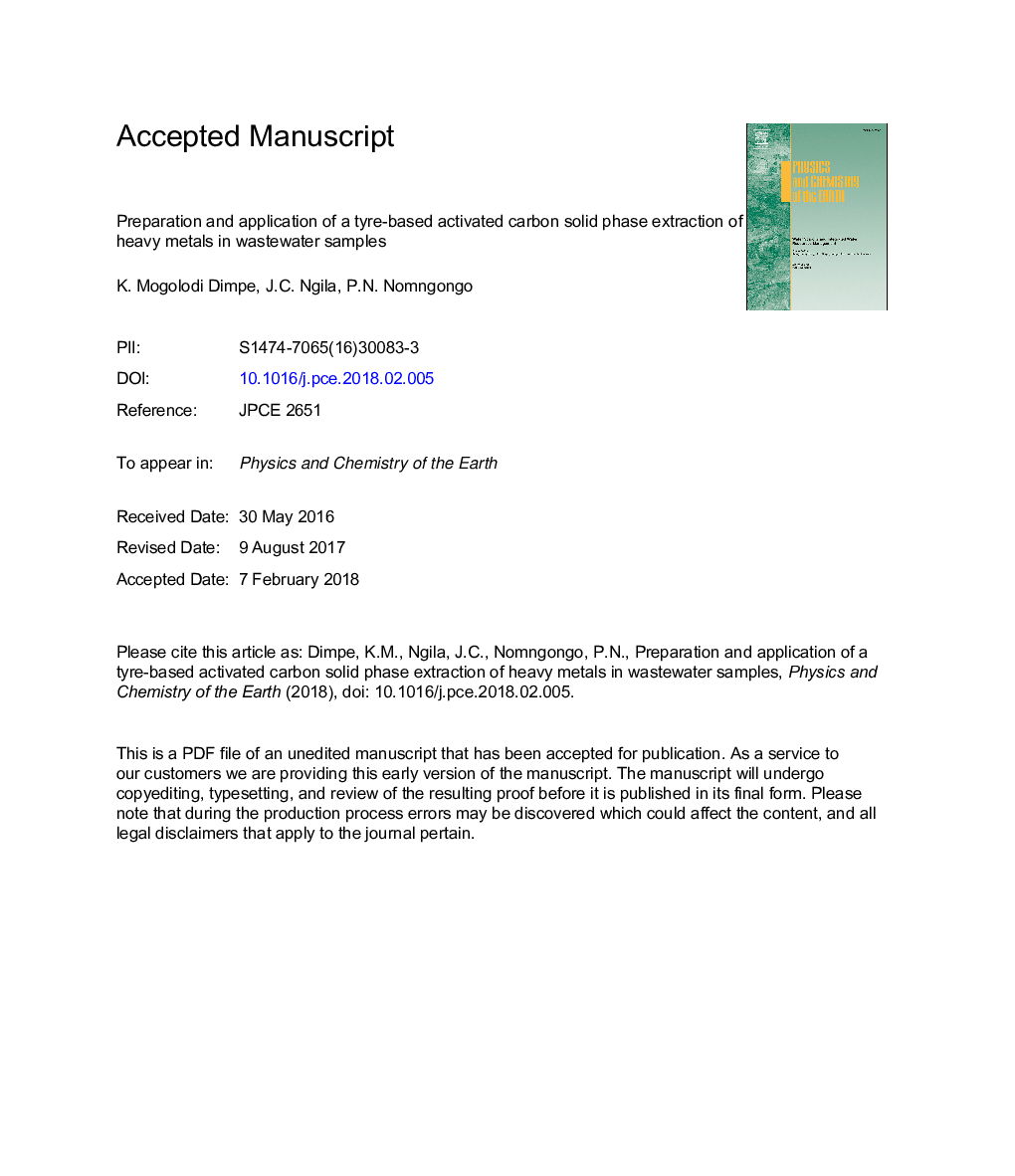| کد مقاله | کد نشریه | سال انتشار | مقاله انگلیسی | نسخه تمام متن |
|---|---|---|---|---|
| 8912351 | 1639333 | 2018 | 29 صفحه PDF | دانلود رایگان |
عنوان انگلیسی مقاله ISI
Preparation and application of a tyre-based activated carbon solid phase extraction of heavy metals in wastewater samples
ترجمه فارسی عنوان
آماده سازی و استفاده از استخراج کربن فعال کربن فعال بر روی اتوبوس از فلزات سنگین در نمونه های فاضلاب
دانلود مقاله + سفارش ترجمه
دانلود مقاله ISI انگلیسی
رایگان برای ایرانیان
کلمات کلیدی
موضوعات مرتبط
مهندسی و علوم پایه
علوم زمین و سیارات
ژئوشیمی و پترولوژی
چکیده انگلیسی
In this paper, the tyre-based activated carbon solid phase extraction (SPE) method was successfully developed for simultaneous preconcentration of metal ions in the model and real water samples before their determination using flame atomic absorption spectrometry (FAAS). The activation of carbon was achieved by chemical activation and the tyre-based activated carbon was used as a sorbent for solid phase extraction. The prepared activated carbon was characterized using the scanning electron microscope (SEM), Brunauer-Emmett-Teller (BET), and Fourier Transform Infrared spectroscopy. Moreover, optimization of the proposed method was performed by the two-level full factorial design (FFD). The FFD was chosen in order to fully investigate the effect of the experimental variables (pH, eluent concentration and sample flow rate) that significantly influence the preconcentration procedure. In this model, individual factors are considered along with their interactions. In addition, modelling of the experiments allowed simultaneous variation of all experimental factors investigated, reduced the required time and number of experimental runs which consequently led to the reduction of the overall required costs. Under optimized conditions, the limits of detection and quantification (LOD and LOQ) ranged 0.66-2.12â¯Î¼g Lâ1and 1.78-5.34â¯Î¼gâ¯Lâ1, respectively and the enrichment factor of 25 was obtained. The developed SPE/FAAS method was validated using CWW-TM-A and CWW-TM-B wastewater standard reference materials (SRMs). The procedure showed to be accurate with satisfactory recoveries ranging from 92 to 99%. The precision (repeatability) was lower than 4% in terms of the relative standard deviation (%RSD). The developed method proved to have the capability to be used in routine analysis of heavy metals in domestic and industrial wastewater samples. In addition, the developed method can be used as a final step (before being discharged to the rivers) in wastewater treatment process in order to keep our water bodies free from toxic metals.
ناشر
Database: Elsevier - ScienceDirect (ساینس دایرکت)
Journal: Physics and Chemistry of the Earth, Parts A/B/C - Volume 105, June 2018, Pages 161-169
Journal: Physics and Chemistry of the Earth, Parts A/B/C - Volume 105, June 2018, Pages 161-169
نویسندگان
K. Mogolodi Dimpe, J.C. Ngila, Philiswa N. Nomngongo,
